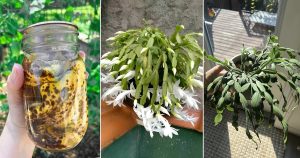You don’t need food to spark fresh growth! Here’s how to trigger new shoots on snake plants without using fertilizer!
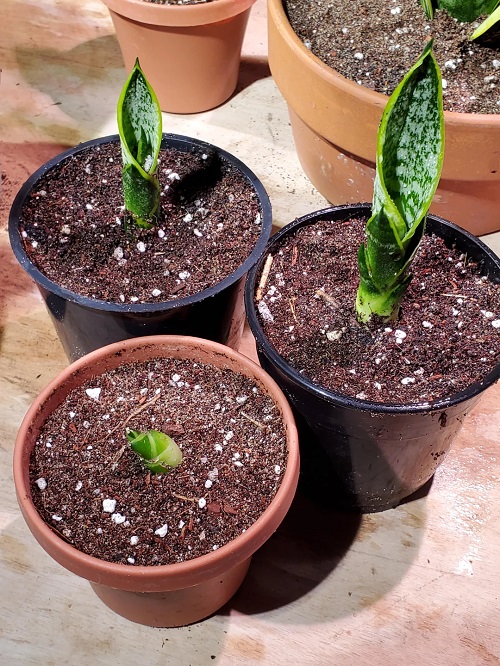
So, you have been growing a snake plant for a while now and have been seeing very little growth. You might have wondered how to get new shoots on your snake plant, but you don’t want to feed it so excessively that it gets leaf burn. We have got the perfect ways to trigger new shoots on snake plants without using fertilizer.
How to Trigger New Shoots on Snake Plants Without Using Fertilizer
1. Give It Direct Sunlight

Usually, you know that succulents like the snake plant prefer bright, indirect sunlight. But if you haven’t seeing much new growth even with good light, there might be something missing—direct sunlight.
Yes, you heard that right! For example, an east-facing window may allow it a couple of hours of mild sunlight during the morning. But that is probably half of what your plant actually needs! Alongside 6-8 hours of indirect sunlight, snake plants grow best under a few hours of direct sun from a south- or west-facing window.
Note: If your snake plant has dark green leaves or is a variety like Sansevieria ‘Black Coral’ or ‘Zeylanica,’ it may tolerate lower light better, but even then, a bit of morning sun can work wonders for new shoots!
2. Err on the Drier Side
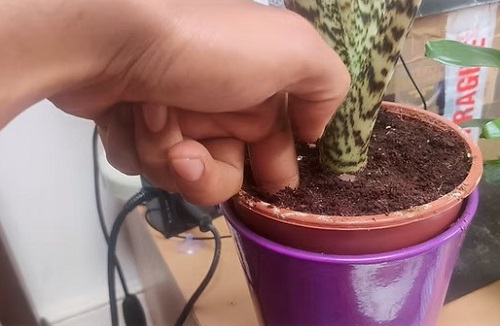
If you are growing a snake plant for the first time, it’s quite natural that you may be making the mistake of overwatering. But this can practically kill your succulent!
If your snake plant spends too much time with its roots in soggy, wet soil, you might start to notice yellowing leaves, stunted growth, and eventual root rot. So, how do you make sure that the snake plant keeps producing new shoots? Do the finger test!
Stick your finger into the soil. If it feels dry, it’s time for a drink. If it’s even slightly damp, wait a few more days. Snake plants can handle a drought, but not soggy feet! Also, make sure to cut back watering by half in winter.
Pro Tip: If you have the means, invest in a soil moisture meter to gauge when to water your snake plant. You can use terracotta pots instead of plastic ones—they help the soil dry out faster and prevent root rot.
3. Warm Temperatures and Average Humidity
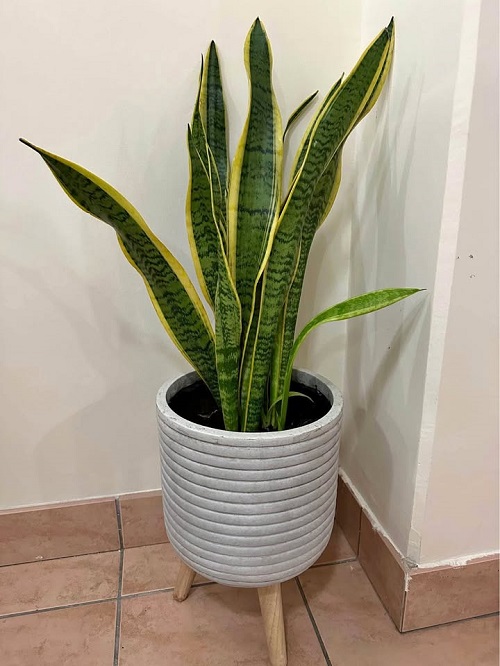
In the wild, snake plants thrive in temperatures between 20–41℃ or 68–105.8℉. Indoors, they’re pretty easygoing and grow well in average room temperatures, as long as their other needs are met. The sweet spot indoors is between 18–27℃ or 65–80℉.
Though this plant can sometimes tolerate low temperatures down to 10 ℃ or 50 ℉, this is only for short periods. Besides keeping the plant away from cold or hot drafts, you can keep it growing quite well in average humidity and watch it flourish!
Also, try grouping your snake plant with other houseplants to create a mini humidity zone—just make sure there’s still good airflow.
4. Monitoring for Pests and Disease
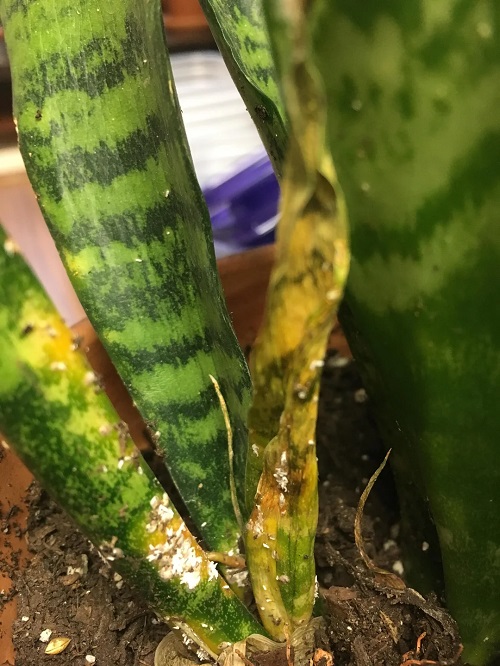
By now, you might have already fixed all the above problems, but there is one thing that still might be hindering the growth of new shoots on your snake plants.
Bugs! Snake plants are tough, but they’re not immune. Spider mites and mealybugs can show up, especially if the air is dry or the plant is stressed. Check weekly for signs of pests and keep the soil well-draining. Use neem oil as a preventative and insecticidal soap if you spot an infestation.
And don’t forget the roots! If your plant’s growth has stalled, check for root rot during repotting—it can creep up silently, with no signs above the soil.
5. Divide the Plant
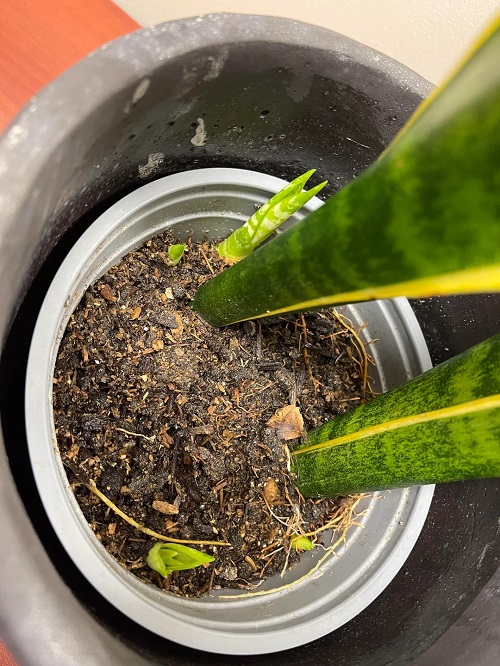
If simply meeting all your plant’s needs doesn’t work and you still see it producing very few new shoots, it may be time to get a bit drastic.
That’s right—we’re talking about dividing the plant. Gently remove it from its pot, find a healthy clump with at least three rhizomes, a good leaf, or a pup, and separate it from the rest. (A rhizome is basically an underground stem that grows new roots and shoots.)
Using a sharp knife or gardening shears, divide this root clump/section and repot into a separate pot with proper drainage holes and a well-draining potting mix. This method is a lot faster than leaf propagation and will result in a bushier plant!
Dividing not only gives you more plants, but also frees up space for the remaining plant to grow new pups more easily. Crowded roots can slow down growth.
6. Propagate the Rhizomes
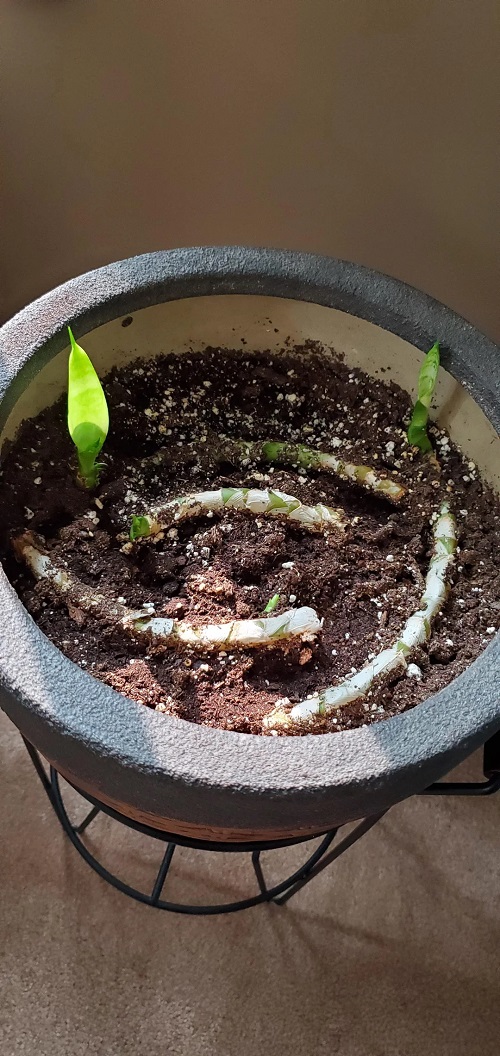
This might sound a lot like dividing the plant—but hang tight! In the last method, you’d need a larger plant to divide. Here, you can work with a smaller one too.
After you slide the plant out of its pot and locate the rhizome, cut it off from the base of the plant. Let it callus for a day or two to prevent infection and root rot. Once your rhizome is dried out and ready, you can repot it in a well-draining pot mix. Soon you will have a brand new plant, shooting up new growth like crazy!
Just make sure the rhizome has a visible bud or “eye”—that’s where your new shoot will sprout. Without it, it’s just a root going nowhere.
And that’s all about how to get new shoots on your snake plant without using fertilizer. Try out these tips and let us know which one worked the best for you in the comments below!



